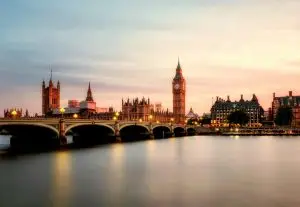The Government’s decision to reaffirm its commitment to a price cap, and use a Draft Bill procedure to implement it, suggests it has settled on a course of action. There remains scope to influence the Bill. This is likely to require using more indirect levers than direct engagement with government stakeholders though.
The intent to publish a draft bill signals the government wants to move relatively quickly.
By announcing its intention to use a Draft Bill to begin implementing its price cap policy, the Government may be signalling its intent to cut down on consultation. At Conservative Party Conference 2017 the Prime Minister, Theresa May, said ‘government will publish a Draft Bill to put a price cap on energy bills. Meeting our manifesto promise.’[1] In doing so the Prime Minister set the Government on a particular course for implementation.
Within UK legislation ‘Draft Bill’ is a technical term, which usually involves a specific type of Parliamentary scrutiny. Draft Bills are specific types of legislation ‘issued for consultation before being formally introduced to Parliament…Most Draft Bills are examined by either select committees in the Commons or Lords or by a joint committee of both Houses.’[2] This process is called Pre-Legislative Scrutiny.
While Draft Bills can also be published for public consultation, usually as White Papers or Green Papers (see annex 1), the Government does not appear to be examining this option. BEIS Secretary, Greg Clark, has indicated the Government is only looking to Parliament for scrutiny. On 5 October 2017 Clark stated that he wanted Ofgem to implement a price cap. Adding ‘Ofgem have been concerned that were they to exercise their powers without legislation…that they would suffer an appeal from the energy companies and it would be lockdown in legal battles…If they need legal backup then I think there is a strong consensus in Parliament for this, so we will publish legislation and we’ll invite the whole house to endorse this, so that they have that legal certainty.’[3]
The use of the draft bill indicates that the Government is aware of the constraints on it however.
The Government may be hoping that pre-legislative scrutiny by the relevant select committee will minimise attempts to substantially amend the Bill. The Conservatives have promised to ‘introduce a safeguard tariff cap that will extend the price protection currently in place for some vulnerable customers to more customers on the poorest value tariffs.’[4] That has been widely interpreted as extending Ofgem’s prepayment meter cap to standard variable tariffs.
At present it is not clear that Labour will not attempt to change the Bill as it passes through Parliament. Labour’s response to Theresa May’s conference commitment was ‘Theresa May has finally been forced to recognise that the energy market is broken. But her response doesn’t go nearly far enough.’[5] Based on this it is not certain that Labour won’t seek to make changes to the Bill, some of which may be potentially endorsed by MPs from other parties (including the Democratic Unionist Party (DUP), which is supporting the Conservative Minority Government on a confidence and supply basis). The Government may feel that pre-legislative scrutiny will help make its Bill credible and palatable enough to get voted through the House of Commons relatively unchanged.
The Government’s lack of majority opens the door to the draft bill being changed.
While not as wide as a government consultation the Draft Bill process does not necessarily have to be short. ‘Once the draft bill has been referred to a committee, it is for that committee to decide its procedures, within the rules of the House and the motion that established it. Committees can choose whether to take written and/or oral evidence from appropriate organisations.’[6]
After the Bill goes through pre-legislative scrutiny and is introduced it will still have several stages to go through before becoming law (see annex 2). ‘The time taken to go through all these stages depends on the length of the Bill, how controversial it is and whether it needs to be passed particularly quickly. An emergency Bill may be passed in a matter of days, whereas a larger Bill may be introduced at the beginning of the session and only passed at the end a year later.’[7] MPs who wish to try and amend it would still have chances to do so throughout this process. If the Bill does not emerge from pre-legislative scrutiny with a consensus behind it, it could still be subject to changes and that could complicate the Government’s plans. Those who engage with MPs through the process of the Bill’s passage may therefore have opportunities to influence it.
ANNEX 1
Green Paper
‘Green Papers are consultation documents produced by the Government. The aim of this document is to allow people both inside and outside Parliament to give the department feedback on its policy or legislative proposals. Copies of consultation documents such as Green Papers are available on the related departmental websites.’[8] Green Papers usually present a range of options, which are consulted upon for a series of months. For example, the Industrial Strategy Green Paper process opened on 23 January 2017 and closed on 17 April 2017.[9]
White Paper
‘White papers are policy documents produced by the Government that set out their proposals for future legislation. White Papers are often published as Command Papers and may include a draft version of a Bill that is being planned. This provides a basis for further consultation and discussion with interested or affected groups and allows final changes to be made before a Bill is formally presented to Parliament.’[10] The consultation period for White Papers can vary but can also be up to three months in length. For example, the Government’s housing white paper consultation opened on 7 February 2017 and closed on 2 May 2017. [11]
ANNEX 2
Progress of Legislation Through Parliament [12]

Discover how Brevia can help you and your organisation by contacting the Brevia Energy Team on 020 7091 1650 or contact@brevia.co.uk
[1] Theresa May MP, Conservative Party Conference Speech, 4 October 2017, link
[2] Parliament.uk, Draft Bills, link
[3] Greg Clark MP, BBC Radio 4, ‘Today,’ 5 October 2017, link
[4] Conservative Party Manifesto 2017, 8 June 2017, p.60, link
[5] Rebecca Long-Bailey MP, Labour Press Release, 4 October 2017, link
[6] House of Commons Library, Pre-legislative Scrutiny, 9 April 2010, p.6, link
[7] Cabinet Office, Legislative process: taking a Bill through Parliament, 20 February 2013, link
[8] Parliament.uk, Glossary, ‘Green Papers,’ link
[9] BEIS, Building our Industrial Strategy: green paper, 17 April 2017, link
[10] Parliament.uk, Glossary, ‘White Papers,’ link
[11] CLG, Fixing our broken housing market: consultation, 7 February 2017, link
[12] House of Commons Library, Public Bills, 18 December 2012, p.5, link




